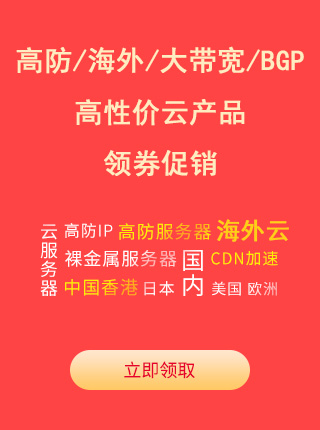- 所在位置:
- 首页 >
- 编程技术 >
- JavaScript >
- SetUp函数参数的使用是怎样,有哪些点要注意
SetUp函数参数的使用是怎样,有哪些点要注意
Admin 2022-07-18 群英技术资讯 1057 次浏览
 这篇文章主要介绍“SetUp函数参数的使用是怎样,有哪些点要注意”的相关知识,下面会通过实际案例向大家展示操作过程,操作方法简单快捷,实用性强,希望这篇“SetUp函数参数的使用是怎样,有哪些点要注意”文章能帮助大家解决问题。
这篇文章主要介绍“SetUp函数参数的使用是怎样,有哪些点要注意”的相关知识,下面会通过实际案例向大家展示操作过程,操作方法简单快捷,实用性强,希望这篇“SetUp函数参数的使用是怎样,有哪些点要注意”文章能帮助大家解决问题。1.setUp函数的第1个参数props
setup(props,context){}
第一个参数props:
props是一个对象,包含父组件传递给子组件的所有数据。
在子组件中使用props进行接收。
包含配置声明并传入的所有的属性的对象
也就是说:如果你想通过props的方式输出父组件传递给子组件的值。
你需要使用props进行接收配置。即props:{......}
如果你未通过Props进行接受配置,则输出的值是undefined
<template>
<div class="box">
父组件
</div>
<no-cont :mytitle="msg"
othertitle="别人的标题"
@sonclick="sonclick">
</no-cont>
</template>
<script lang="ts">
import NoCont from "../components/NoCont.vue"
export default {
setup () {
let msg={
title:'父组件给子给子组件的数据'
}
function sonclick(msss:string){
console.log(msss)
}
return {msg,sonclick}
},
components:{
NoCont
}
}
</script>
<template>
<div @click="sonHander">
我是子组件中的数据
</div>
</template>
<script lang="ts">
import { defineComponent,setup } from 'vue';
export default defineComponent({
name: 'NoCont',
// 未进行接受
// props:{
// mytitle:{
// type:Object
// }
// },
setup(props,context){
console.log('props==>',props.mytitle);//输出的值是 undefined
function sonHander(){
context.emit('sonclick','子组件传递给父组件')
}
return {sonHander}
}
});
</script>

为什么通过props.mytitle输出的值是undefined呢?
因为我们没有使用props进行接收配置。即
props:{
mytitle:{
type:Object
}
},
如果我们添加上接受配置
2.参数context的讲解
第2个参数:context,是一个对象。
里面有attrs(获取当前标签上的所有属性的对象)
但是该属性是props中没有声明接收的所有的对象。
如果你使用props去获取值,同时props中你声明了你要获取的值
则:获取的值是undefined
注意点:
attrs获取值是不需要props中没有声明接收。
第1个参数props获取值是需要props中声明接收的
有emit事件分发,(传递给父组件需要使用该事件)
有slots插槽
<template>
<div @click="sonHander">
我是子组件中的数据
</div>
</template>
<script lang="ts">
import { defineComponent,setup } from 'vue';
export default defineComponent({
name: 'NoCont',
props:{
mytitle:{
type:Object
}
},
setup(props,context){
//输出{title:父组件传递的值}
console.log('props==>',props.mytitle);
// 输出别人的标题【使用context获取值,不需要使用props去接受】
console.log('context==> ',context.attrs.othertitle);
// 输出undefined,因为context不需要使用props去接受。
console.log('contextmytitle==> ',context.attrs.mytitle);
function sonHander(){
context.emit('sonclick','子组件传递给父组件')
}
return {sonHander}
}
});
</script>

3. 子组件向父组件派发事件
<template>
<div @click="sonHander">
我是子组件中的数据
</div>
</template>
<script lang="ts">
import { defineComponent,setup } from 'vue';
export default defineComponent({
name: 'NoCont',
props:{
mytitle:{
type:Object
}
},
setup(props,context){
function sonHander(){
context.emit('sonclick','子组件传递给父组件')
}
return {sonHander}
}
});
</script>
4.优化事件派发
我们知道第2个参数context是一个对象
并且对象中有三个属性attrs,slots,emit
在事件派发的时候,直接使用emit就ok了
<template>
<div @click="sonHander">
我是子组件中的数据
</div>
</template>
<script lang="ts">
import { defineComponent,setup } from 'vue';
export default defineComponent({
name: 'NoCont',
props:{
mytitle:{
type:Object
}
},
setup(props,{attrs,slots,emit}){
//直接使用emit进行事件派发
function sonHander(){
emit('sonclick','子组件传递给父组件')
}
return {sonHander}
}
});
</script>
5.获取父组件传递的值
我们将使用props参数获取值
以及使用attrs获取值
<template>
<hr/>
<h2>子组件</h2>
<div @click="sonHander">
我是子组件中的数据
</div>
<h2>使用了props声明接收==>{{ mytitle }}</h2>
<h2>使用参数attrs获取==>{{ attrs.othertitle }}</h2>
</template>
<script lang="ts">
import { defineComponent,setup } from 'vue';
export default defineComponent({
name: 'NoCont',
props:{
mytitle:{
type:Object
}
},
setup(props,{attrs,slots,emit}){
function sonHander(){
emit('sonclick','子组件传递给父组件')
}
return {sonHander,attrs}
}
});
</script>

附使用setup函数时需要注意几点:
- setup函数的执行时机是在beforeCreate和created之间
- 由于setup执行时机是在created之间,所以组件才刚刚被创建,而data和methods还没初始化好,所以无法在setup中使用data和methods
- setup中this指向undefined
- setup只能是同步的,不能是异步的
总结
感谢各位的阅读,以上就是“SetUp函数参数的使用是怎样,有哪些点要注意”的内容了,经过本文的学习后,相信大家对SetUp函数参数的使用是怎样,有哪些点要注意都有更深刻的体会了吧。这里是群英网络,小编将为大家推送更多相关知识点的文章,欢迎关注!

免责声明:本站发布的内容(图片、视频和文字)以原创、转载和分享为主,文章观点不代表本网站立场,如果涉及侵权请联系站长邮箱:mmqy2019@163.com进行举报,并提供相关证据,查实之后,将立刻删除涉嫌侵权内容。
猜你喜欢
-
前端项目中如何从打包和合并方面优化网页响应速度
网站页面的响应速度与用户体验息息相关,直接影响到用户是否愿意继续访问你的网站,所以这篇文章主要给大家介绍了关于Vue项目打包、合并及压缩优化网页响应速度的相关资料,需要的朋友可以参考下
-
如何掌握vue-router基础知识及其应用
这篇文章主要介绍了Vue路由vue-router详细讲解指南,对vue-router感兴趣的同学,可以参考下
-
Vue框架下怎么实现h5聊天对话功能,思路和方法是什么
这篇文章主要介绍了Vue +WebSocket + WaveSurferJS 实现H5聊天对话交互的实例,帮助大家更好的理解和学习vue,感兴趣的朋友可以了解下
-
JS中进行判断浏览器在什么环境打开的方法是什么
js判断在哪个浏览器打开项目的方法,通过以下方法判断浏览器
-
JS和jQuery对象的转换怎样实现,方法是什么?
这篇文章给大家分享的是实现JS和jQuery对象的转换的方法。小编觉得挺实用的,因此分享给大家做个参考,文中的示例代码介绍得很详细,有需要的朋友可以参考,接下来就跟随小编一起了解看看吧。
成为群英会员,开启智能安全云计算之旅
立即注册Copyright © QY Network Company Ltd. All Rights Reserved. 2003-2020 群英 版权所有
增值电信经营许可证 : B1.B2-20140078 粤ICP备09006778号 域名注册商资质 粤 D3.1-20240008





